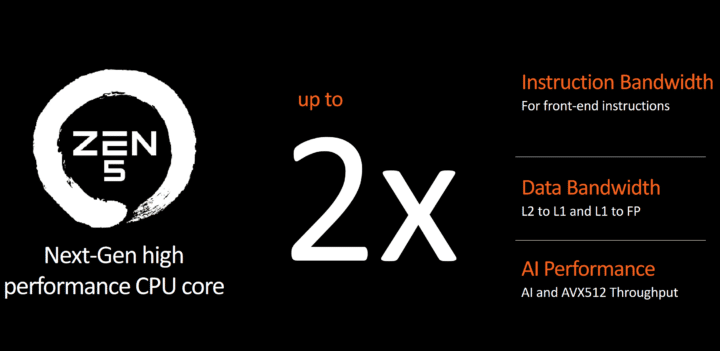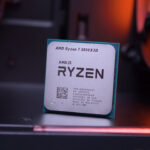AMD has announced that their upcoming Zen 5-based Ryzen 9000 processors are set to launch next month, showcasing a projected 16% increase in IPC on the advanced TSMC 4nm (N4P) manufacturing process. Initial benchmarks from the company indicate a significant gaming performance advantage for the Ryzen 9 9950X over the Intel Core i9-14900K, with a lead of up to 23%. When it comes to content creation tasks, the 9950X excels even further, surpassing the 14900K by a substantial 55% in popular software like Blender and Handbrake. However, in a surprising comparison regarding gaming capabilities between these processors and the Ryzen 7 7800X3D, AMD provided an intriguing response:
While the Ryzen 9 9950X maintains its position as a top performer in our internal tests, the Ryzen 7 7800X3D remains the flagship solution, although the performance delta between X3D and non-X3D variants has somewhat narrowed. So, while a 7800X3D will indeed outpace a 9700X, the margin might not be as substantial as some would anticipate.
Furthermore, I can confirm that our commitment to advancing the X3D lineup remains steadfast. We are actively developing exciting enhancements for X3D, rather than simply recycling existing technology.
Donny Woligroski, Senior Technical Marketing Manager, Ryzen (as quoted by Tomshardware)
Initial projections suggest that the Ryzen 7 7800X3D will maintain a slight performance advantage over both the Ryzen 7 9700X and the Ryzen 9 9950X in gaming tasks. However, this superiority may be short-lived, as the anticipated arrival of the Ryzen 9000X3D series at CES 2025 could potentially shift the competitive landscape back in favor of Intel’s Arrow Lake-S processors.

AMD has teased forthcoming “exciting enhancements” for the Zen 5 X3D chips, but specifics remain elusive at this time. Notably, the Ryzen 7000X3D processors showcased an increased stacked L3 cache bandwidth of 2.5 TB/s, up from 2 TB/s on the Ryzen 7 5800X3D. With both generations employing TSMC’s 9-micron TSV interconnects, there is speculation about potential upgrades in this area to enhance data throughput and reduce latency.
Distinct features of the Ryzen 9 7900X3D and the 7950X3D include a standard and a 3D stacked CCD configuration. While the former may offer limited benefits in gaming scenarios, it proves advantageous for content creation tasks. The rationale behind this lies in consolidating all gaming code within a unified cache pool to minimize latency and pipeline interruptions. Conversely, the Zen 4 X3D CPUs feature a single large L3 cache pool on one die and a standard L3 cache pool on the other, at times necessitating data segmentation across different cache segments, resulting in increased latency. Although game optimization strategies can mitigate this issue to some extent, there are inherent limitations. Thermal management also presents a challenge.

Notably, the stacking of an L3 cache die above the 4nm CCD introduces complexities in thermal dissipation, leading to lower maximum operating temperatures compared to standard Ryzen CPUs and restricting overclocking capabilities. The evolution of the Ryzen 9000X3D lineup remains a subject of keen interest, with speculations suggesting potential enhancements to TSVs and enlarged L3 cache dies, as the effectiveness of multiple cache dies may be limited.











